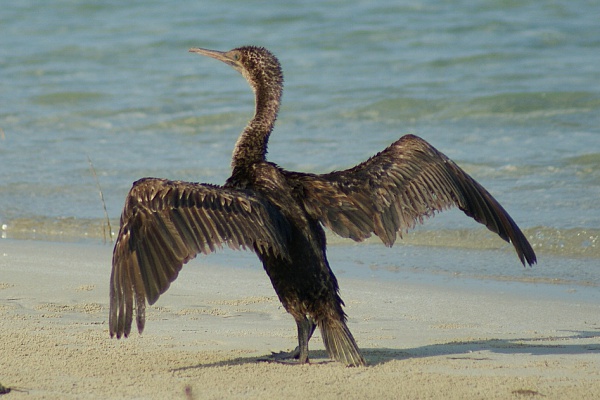Facts About Socotra cormorant
The Socotra cormorant, also referred to as the Socotran cormorant or Socotra shag, is a threatened bird species endemic to the Persian Gulf and the southeastern coast of the Arabian Peninsula. In 2005, it was confirmed that these birds also breed on the Socotra islands in the Indian Ocean. Exhibiting predominantly black plumage, their coloration can change during the breeding season. These cormorants measure approximately 80 centimeters in length and are renowned for their exceptional diving abilities, capable of deep dives and remaining underwater for up to three minutes to search for food.
Socotra cormorants are highly social birds, often observed in large flocks both on land and at sea. Unfortunately, this species has been listed as Vulnerable on the IUCN Red List since 2000. The primary reasons for their decline include coastal development, human disturbances, and marine pollution near their nesting sites. The current global population is estimated to be around 110,000 breeding pairs, translating to roughly 330,000 to 500,000 individual birds. The only protected nesting site in the Persian Gulf is on the Bahraini Hawar Islands, which is designated under the Ramsar Convention for the conservation of wetlands.
Conservation efforts to protect the Socotra cormorant are ongoing. For example, in 2012, nearly 12,000 breeding pairs were recorded in Abu Dhabi. Additionally, this species is covered under the Agreement on the Conservation of African-Eurasian Migratory Waterbirds (AEWA), which aims to safeguard migratory waterbirds and their habitats. Despite the challenges, dedicated efforts continue to prevent further decline of this unique bird species.

 Saudi Arabia
Saudi Arabia